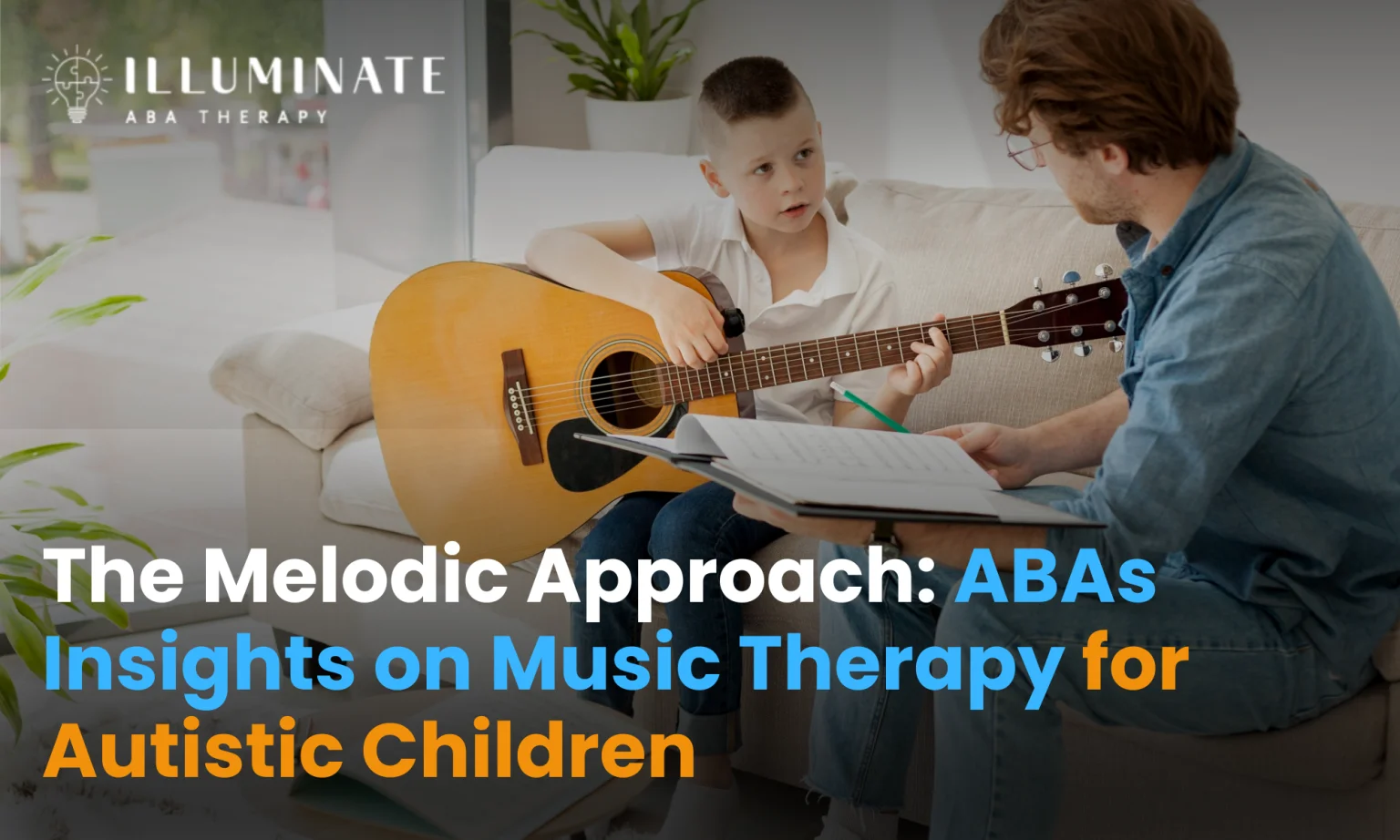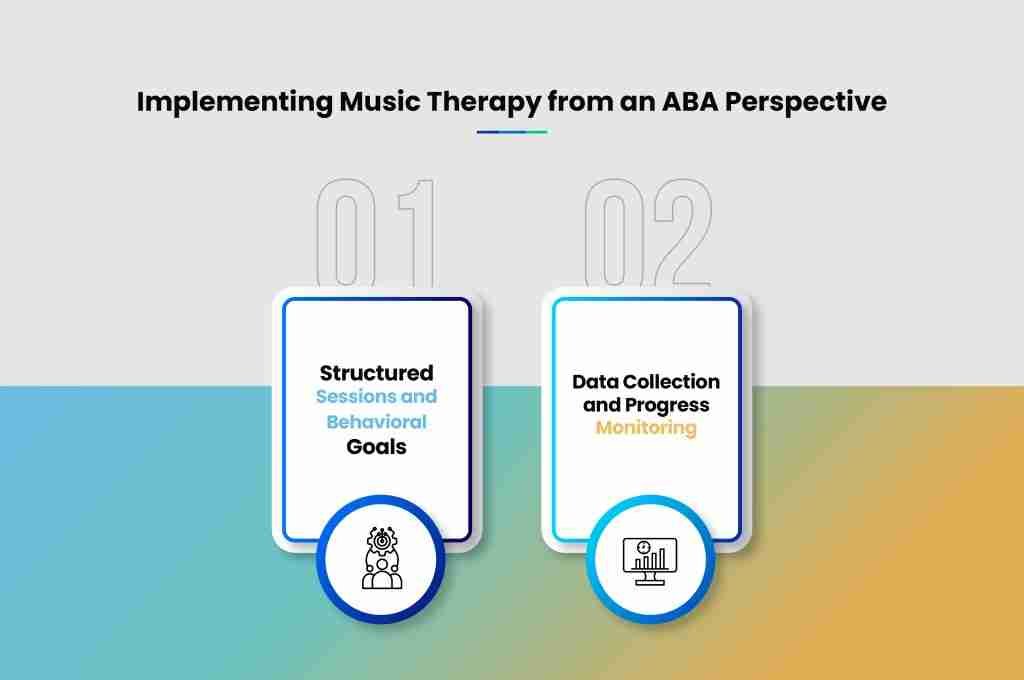The Melodic Approach: ABAs Insights on Music Therapy for Autistic Children
ABA TherapyJuly 17, 2025

Understanding Music Therapy for Autism
Exploring how music therapy helps folks with autism, let's see how it links up with ABA therapy and its perks. Teaming these together can really lift the spirits of those on the autism spectrum.
The Role of ABA Therapy in Supporting Children with Autism
Grab onto Applied Behavior Analysis (ABA) therapy—it's a big deal when it comes to helping kids with autism. Full of structure and backed by research, ABA focuses on cheering good behaviors and teaching new tricks. Mix it up with music therapy, and suddenly you're cooking with gas. It helps target behavioral goals using musical setups fitted just right for each person.
Introduction to Music Therapy for Autism
Now, music therapy brings something truly special to the table. It gives a lively spin on supporting folks with autism across different development stages. Music's got this magic touch—helping with emotions, social mingling, and even chatting away, all wrapped up in creativity. Beats and tunes work wonders in helping folks on the spectrum show feelings and connect with the world around them, and, bonus: it's a peaceful way to do so.
In a music therapy session, you'll see everything from sing-alongs to getting the groove on with instruments and dance moves. These not only boost thinking, feeling, and special senses but also build bridges with others. Bringing in ABA strategies like positive reinforcement and gentle prodding, music therapy can hone in on behavior goals and give social skills a good boost.
Together, the fundamental ideas of ABA and the rhythms of music therapy offer a wide-ranging and thorough way to help kids with autism, lifting their spirits and making life better. To find more ways to enrich ABA therapy, be sure to check out our piece on using video modeling to enhance social skills in autism.
Benefits of Music Therapy for Autistic Children
Digging into how music therapy helps autistic kids, it's clear that this approach leads to big perks in handling feelings and boosting social skills.
Emotional Regulation and Expression
Music therapy gives autistic kiddos a comfy space to chill out, express themselves, and manage their feelings. With tunes guiding the way, kids can explore and share what’s going on in their minds and hearts. Music’s rhythm acts like a calming hug, helping to ease anxiety and mood swings.
Jamming with rhythms and making up tunes can really help kids learn to handle their emotions better. By tossing music into the mix, these children pick up on ways to cope, think through their feelings, and become emotionally tougher.
Social Skills Development
Music therapy can work wonders on social skills too. In these sessions, kids team up, take turns, pay attention, and communicate more effectively—all while singing or playing instruments together. These activities give them a chance to practice working with others and pick up on cues without words.
Jamming with others naturally leads to bonding. Kids, through shared musical moments, connect, feel each other's vibes, and find a place where they belong. These interactions build bridges with others and build up confidence and self-esteem.
The magic of music in therapy, especially when mixed with behavior programs like ABA, shows how powerfully it can boost emotional wellness and social skills in autistic children. Blending music therapy into these programs provides a rounded approach that meets both their emotional and behavioral needs. Curious about other ways to boost social skills? Check out our article on using video modeling to enhance social skills in autism.
Implementing Music Therapy from an ABA Perspective

Mixing music therapy into Applied Behavior Analysis (ABA) for those with autism can be like adding a little magic to their lives. With a clear path, uncovering how the beats and rhythms can groove with ABA’s structured sessions and behavioral targets can truly lift the spirits and skills of kids with autism.
Structured Sessions and Behavioral Goals
Music therapy within an ABA framework isn't just a jam session; it’s about crafting a safe and steady groove where learning and fun happen simultaneously. Think of structured sessions as setting up a playlist with a purpose. You need a roadmap with clear points that focus on what each child needs most, like chatting more, making friends, or expressing feelings.
These sessions break down musical activities into tiny, digestible pieces—levels if you will—where each child can add their piece to the musical puzzle bit by bit. Routine is king here. Visual cues—think song lyric cheat sheets or a “what’s next?” board—guide them through the chorus and verses of each session, making it all less like trying to hit the high notes without sheet music.
By blending musical magic with the practical steps of ABA, therapists make a cozy environment for learning, where self-expression is celebrated and positive connections flourish.
Data Collection and Progress Monitoring
For kids with autism, music therapy's dance with ABA thrives on feedback. Like scanning restaurant reviews before dining out, therapists keep tabs on how sessions vibe with the child's progress. Recording how each little performer reacts, behaves, and grows during therapy paints a fuller picture of what works and what might need remixing.
Data gathering is like having a backstage pass—it could be behavior checklists, session journaling, or even video footage capturing a child’s journey from hesitant hums to vibrant vocals. This “evidence” lets therapists see the bigger picture, spot improvement trends, and steer sessions based on what each child needs.
Using this feedback loop, therapists can show just how effective these musical interventions are, adjust their own methods for better results, and support the essence of mixing music therapy with ABA for kids on the autism spectrum.
With well-laid-out sessions aiming for specific behavioral hits and a steady beat of data keeping track of progress, adding music therapy to ABA programming can open new paths of expression and learning for children with autism. This duet of strategies amplifies therapy’s impact, echoing through each child's developmental journey like a favorite tune on repeat.
Integration of Music Therapy into ABA Programs
Bringing music therapy into Applied Behavior Analysis (ABA) programs can boost the overall help for those with autism. By mixing ABA's structured approach with the creative vibes of music, we get a well-rounded strategy to meet each person's special needs. This means ABA and music therapists need to team up, adjusting their tactics to fit individual styles and likes.
Teamwork Between ABA and Music Therapists
Getting ABA therapists to join forces with music therapists is key if we want music therapy to really stick in ABA settings. By pooling their smarts, these professionals can cook up targeted plans that tackle specific aims and hurdles of each person.
ABA therapists bring the deep knowledge about behavior trends and learning habits in autism, which can guide music therapists. This collaboration helps design music activities that sync with the overall ABA goals.
On the flip side, music therapists can toss in fun and creative music interventions that can supercharge ABA tactics. By blending the set routines of ABA with music's soothing power, it builds a nurturing environment for learning and growing.
Tweaking Strategies for Personal Touch
Tailoring strategies to fit individual quirks and likes is a big part of mixing music therapy with ABA. Everyone is different, and a personal touch makes therapy more valuable and purposeful.
ABA and music therapists work together to figure out an individual's strengths, hurdles, and preferences. With this info, they whip up personalized interventions that mix musical elements into established behavior goals.
Tuning strategies to fit personal needs makes music therapy in ABA stand out. Such customized care keeps individuals with autism engaged, making therapy more fruitful and life quality better.
To wrap it up, teamwork between ABA and music therapists, plus adjusting strategies for personal needs, is crucial for weaving music therapy into ABA programs successfully. With combined might from both therapies, individuals with autism get a more complete and supportive treatment that boosts their growth and well-being
Upping the Communication Game
When it comes to sharpening up chatting chops, video modeling is a real game-changer. Watching videos that demo nifty tricks like keeping eye contact, using hand signals, and having a good old chinwag can make anyone a pro at chatting. This nifty visual guide boosts both talking and the unspoken ways of communicating, turning every interaction into a potential bonding moment.
Making Friends One Video at a Time
Video modeling doesn't just stop at improving social skills—it’s paving a way to real friendships, too! By soaking in positive interactions and getting the hang of the do's and don'ts in the social dance, people with autism can pick up on how to kickstart and keep up friendships with everyone from buddies and folks to strangers. These videos lay down the how-to’s for reading social clues, showing emotions, and feeling someone else’s shoes—in other words, nailing what it takes to build and cherish bonds.
Weaving in video modeling into social skills programs means folks with autism can pick up on and stick with social know-how. With its snapshot-style learning, video modeling turns learning into a fun visual journey, making it relatable and friendly for them. Curious about how other therapies like music can lend a hand? Check out our piece on the impact of music therapy on children with autism.
